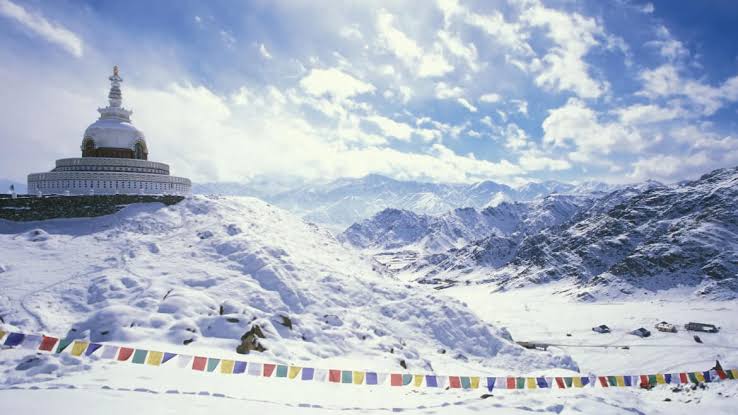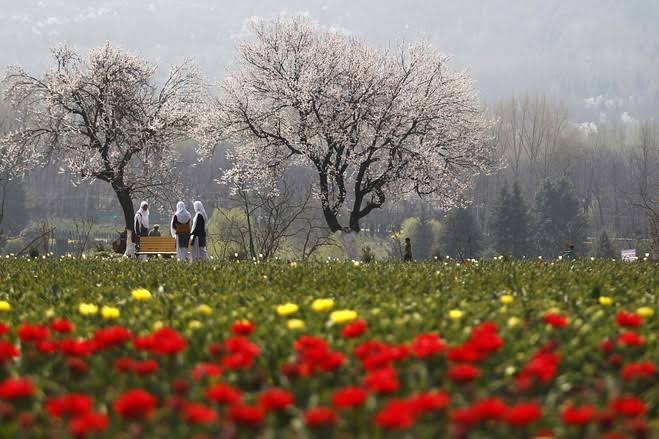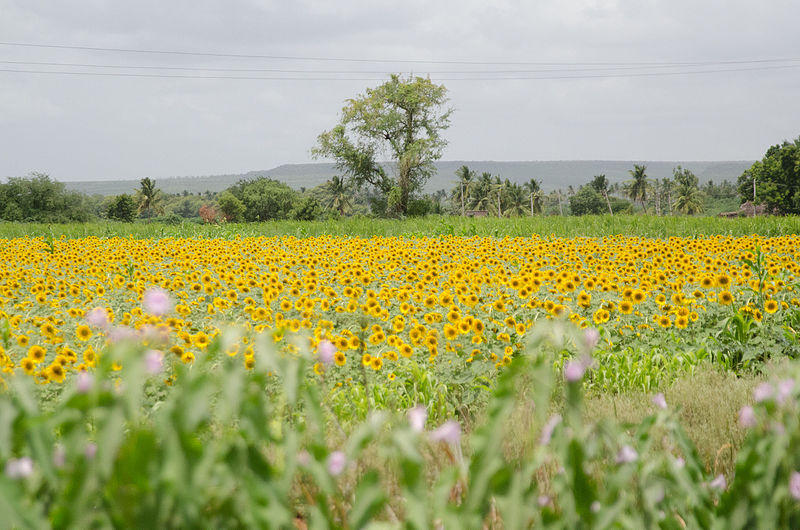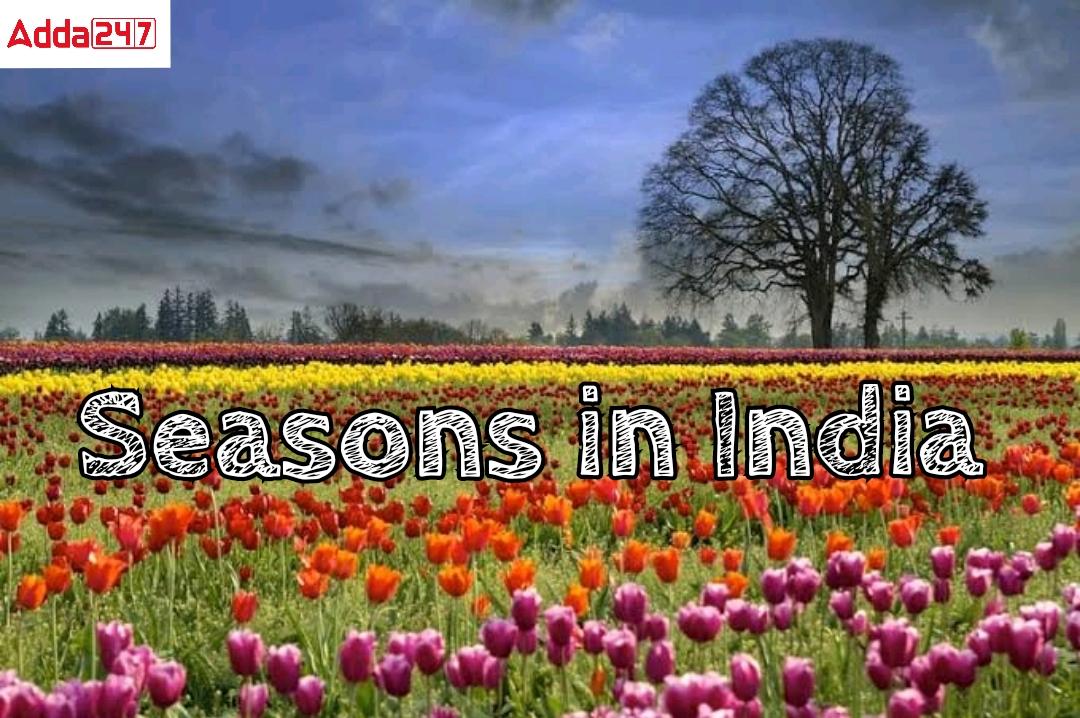Table of Contents
Seasons are distinct periods of the year, each marked by changes in weather, temperature, and daylight hours. They result from the Earth’s orbit around the Sun and the axial tilt, which causes different parts of the planet to receive varying amounts of sunlight throughout the year. Typically, four seasons are recognized: spring, summer, autumn (or fall), and winter. Each season has its unique characteristics—spring brings renewal, summer warmth, autumn harvest, and winter cold. The cycle of seasons plays a vital role in ecosystems, agriculture, and human activities, influencing everything from plant growth to cultural traditions.
Season Name
Learning the Season Name is very crucial for a kid. In India, we observe 6 seasons, so it is essential to know all Seasons’ names. In this article, We will learn all the Season Names and brief ideas about the seasons in India.
Seasons Name
Seasons Name: India is a country of Diversity. Like the different diversities in Language, Food, culture, and religion throughout the country, here you observe the diversity of Climates. With a total area of 3.28 million square kilometers, India has a wide diversity of climatic and meteorological conditions covering numerous states and landmarks, from the chilly Himalayan mountain ranges in Kashmir to the humid woods of Kerala or the Kanyakumari. In India, As per Indian Meteorological Department, Mainly there are four main seasons observed in India which are summer, winter, monsoon, and autumn.
6 Seasons in India (India Six Seasons)
Seasons Name: A season is a division of the year based on variations in the local climate, ecology, and number of daylight hours. Seasons on Earth are a result of both the axial tilt of the planet in relation to the ecliptic plane and its orbit around the sun. As a place’s season changes according to its latitude, altitude, and elevation above sea level.
The Indian Meteorological Department, Mainly there are climatological seasons observed in India .which are of summer, pre winter, winter, monsoon, spring, and autumn.
Must Read: All 100+ Colors Name in English & Hindi
Six Season Name in English
If you travel from the northeast part of India Kashmir to southeast Kanyakumari, you will feel the diverse climate of India. When you take into account all the differences in temperature, rainfall, and air quality that are noticed throughout the year, India is one of the few countries where we discover numerous weather changes.
This season, which usually runs from May to June, comes after the spring season. The temperature increases as soon as this condition arises and is found to be between 32 and 40 degrees Celsius. During this season, the days are typically longer than the nights.
All rivers, tanks, ponds, and tanks are dry during this season. Even the animals that look for shelter in the afternoons must endure the oppressive heat
Read:100 Wild Animals Name in English and Hindi
6 Seasons Name in English with Months
There are six distinct seasons in India. Six seasons are equally divided into the twelve months of the year. These Seasons Name are
| Season | Month | Temperature |
| Spring | March-April | 20o to 25o |
| Summer | May-June | 25o to 45o |
| Monsoon | July-August | 30o to 35o |
| Autumn | September-October-mid November | 20o to 30o |
| Pre-Winter | November-December | Around 27o |
| Winter | Mid-December -February | 5o to 25o |
Read 100 Flowers Name in English & Hindi
All 6 Season Name in English with Months
In India, There are mainly 5 seasons. Each Season has its distinct climate and characteristics. Various festivals are observed in each of the seasons. Here we have given a brief description of each season. Check now,
Winter Season
The coldest time of year is winter. It lasts through January and into February from December. As there is neither heat nor rain, the weather is still fairly comfortable. A misty haze descends upon the landscape, and the sun becomes mild. Early in the morning, dewdrops sparkle on the grass. The time of year for snow, colds, and sniffles. Now a cool breeze is blowing from the north. In certain hilly locations, it snows. However, the sun is also fairly brilliant in the sky.

The market is overrun with different veggies, including beans, tomatoes, cabbage, cauliflower, and more. Winter is actually a season of flowers and fruits, with blooms like marigolds, sunflowers, dahlias, and zinnias.

Spring Season
The “king of seasons” is said to be spring. It lasts from March to April. This time of year is quite pleasant. It is not too hot nor too cold. Under the clear blue sky, a light breeze blows. There are no more clouds in the sky. The field is completely green. The trees that appeared lifeless in the winter come to life in the spring. Branchless trees sprout new leaves. India celebrates Holi with celebrations and colorful decorations.

Summer Season
Summar which usually runs from May to June comes after the spring season. The temperature increases as soon as this condition arises and is found to be between 32 and 40 degrees Celsius. During this season, the days are typically longer than the nights.
All rivers, tanks, ponds, and tanks are dry during this season. Even the animals that look for shelter in the afternoons must endure the oppressive heat.

Monsoon Season
After summer, there is the monsoon, which typically lasts from mid-June until mid-August. It is referred to as Varsha Ritu in Hindu literature. People welcome rain after the severe summer heat. Typically, the sky is covered in dark rain clouds. Rain occasionally stops. The air turns cooler, and the trees appear fresh and green. The impact of this season is also felt strongly in agriculture and other farming-related activities.

Must check: 100 Birds Name in English & Hindi
Autumn Season
After the rains, autumn arrives. September and October are the time frames covered. The sky is now a vibrant color. The clear sky allows for the sight of clouds sailing across it. On the ground, the morning dews sparkle like diamonds. Golden paddy covers the lush green fields. Farmers are still working hard in the fields. For its festivals, autumn is highly favored. Autumn is a time for festivals, such as Durga Puja, Onam, Bakrid, Chakradhar Samaroh, and Athachamayam Festival.

All Seasons in The World
The Earth experiences four primary seasons based on its axial tilt and the way sunlight is distributed across its surface throughout the year. These seasons are Spring, Summer, Autumn (or Fall), and Winter, though the timing and characteristics of these seasons vary between the Northern and Southern Hemispheres. Additionally, some regions near the equator experience different seasonal patterns due to their tropical climate. Let’s go over the main types of seasonal patterns:
1. Temperate Regions (Four Seasons):
These regions, typically located between the tropics and the polar circles, experience four distinct seasons as mentioned above. These regions include large parts of North America, Europe, and Asia.
a) Spring:
Characteristics: Mild temperatures, blooming flowers, and an increase in daylight.
Timing: March to June (Northern Hemisphere), September to December (Southern Hemisphere).
Explanation: Spring follows winter and is associated with the gradual warming of temperatures. Plants start to grow, animals emerge from hibernation, and many species reproduce.
b) Summer:
Characteristics: Warm to hot temperatures, long daylight hours.
Timing: June to September (Northern Hemisphere), December to March (Southern Hemisphere).
Explanation: Summer is the warmest season due to the Earth’s tilt, which causes direct sunlight to hit these regions. It’s often associated with outdoor activities and vacations.
c) Autumn (Fall):
Characteristics: Cooling temperatures, falling leaves, and harvest time.
Timing: September to December (Northern Hemisphere), March to June (Southern Hemisphere).
Explanation: Autumn marks the transition from summer to winter. Trees shed their leaves, and animals prepare for the colder months ahead.
d) Winter:
Characteristics: Cold temperatures, snow (in many regions), and shorter daylight hours.
Timing: December to March (Northern Hemisphere), June to September (Southern Hemisphere).
Explanation: During winter, the Earth’s tilt causes less direct sunlight in these regions. As a result, temperatures drop significantly, and ecosystems adapt to the colder conditions.
2. Tropical Regions (Two Seasons)
Regions near the equator, like parts of South America, Africa, Southeast Asia, and Central America, typically experience two main seasons: Wet and Dry, due to their proximity to the equator, where temperatures remain relatively constant throughout the year.
a) Wet Season (Monsoon):
Characteristics: Heavy rainfall, thunderstorms, and lush vegetation.
Timing: Varies by region, but often around May to October.
Explanation: During the wet season, winds bring moisture from nearby bodies of water, causing intense rainfall. This season is crucial for agriculture.
b) Dry Season:
Characteristics: Little to no rain, dry vegetation, and cooler nights.
Timing: Opposite of the wet season, often from November to April.
Explanation: The dry season is characterized by minimal precipitation. Many regions experience a significant reduction in greenery and water levels during this time.
3. Polar Regions (Two Extreme Seasons):
The regions near the North and South Poles, such as Antarctica and the Arctic, experience only two seasons due to extreme latitudes: Polar Day and Polar Night.
a) Polar Day (Summer):
Characteristics: 24 hours of daylight, cold temperatures despite the sun being visible.
Timing: Roughly March to September in the Arctic, and September to March in the Antarctic.
Explanation: During this time, the pole is tilted toward the sun, causing continuous daylight (midnight sun). However, temperatures remain low due to the low angle of the sun’s rays.
b) Polar Night (Winter):
Characteristics: 24 hours of darkness, extreme cold, ice, and snow.
Timing: Opposite of Polar Day; September to March in the Arctic, and March to September in the Antarctic.
Explanation: The pole is tilted away from the sun, leading to no direct sunlight for months, resulting in total darkness and freezing temperatures.
Summary of Season Types:
Temperate Regions: Spring, Summer, Autumn, Winter.
Tropical Regions: Wet and Dry Seasons.
Polar Regions: Polar Day (Summer), Polar Night (Winter).
Seasons are crucial to life on Earth, influencing weather patterns, ecosystems, and human activities across different parts of the world.
6 Seasons Name in English and Hindi
Here we have given a list of Seasons Name in English and Hindi.
| Season in Hindi | Translation in English | Season in English |
| 1. वसंत ऋतु | Vasant Ritu | Spring Season |
| 2. ग्रीष्म ऋतु | Gresham Ritu | Summer Season |
| 3. वर्षा ऋतु | Varsha Ritu | Rainy Season |
| 4. शरद ऋतु | Sharad Ritu | Autumn Season |
| 5. हेंमत ऋतु | Hemmat Ritu | PreWinter Season |
| 6. शीत ऋतु | Sheet Ritu | Winter Season |
6 Seasons Name in Sanskrit
Sanskrit is one of the oldest language of the world and some believe it to be the oldest one. In ancient India, it was the prominent language of communication unlike the Hindi language as today. In fact all our ancient books of medicine and sacred texts are written in the Sanskrit language. So, it is highly important to know the name of seasons in our ancient language. Knowing what our ancestors used to call the 6 seasons that we know is not only good for our general knowledge but it is also important from the examination point of view. It is always a good idea to remember and cherish our roots. For this, we have presented the names of 6 seasons in the Sanskrit language below along with their Hindu months.
| ऋतु | संस्कृत में | हिंदू मास | अंग्रेजी मास |
| वसंत (Spring) | वसंत: | चैत्र से वैशाख | मार्च से अप्रैल |
| ग्रीष्म (Summer) | ग्रीष्म: | ज्येष्ठ से आषाढ | मई से जून |
| वर्षा (Rainy) | वर्षा | श्रावन से भाद्रपद | जुलाई से सितंबर |
| शरद् (Autumn) | शरद् | आश्विन से कार्तिक | अक्टूबर से नवंबर |
| हेमंत (Pre-Winter) | हेमंत: | मार्गशीर्ष से पौष | दिसंबर से 15 जनवरी |
| शिशिर (Winter) | शिशिर: | माघ से फाल्गुन | 16 जनवरी से फरवरी |
Related Posts:



 JKBOSE 10th Result 2024 Bi-Annual Out fo...
JKBOSE 10th Result 2024 Bi-Annual Out fo...
 CLAT Previous Year Question Papers (2024...
CLAT Previous Year Question Papers (2024...
 CLAT Sample Paper 2025 Out, Download Sam...
CLAT Sample Paper 2025 Out, Download Sam...






























